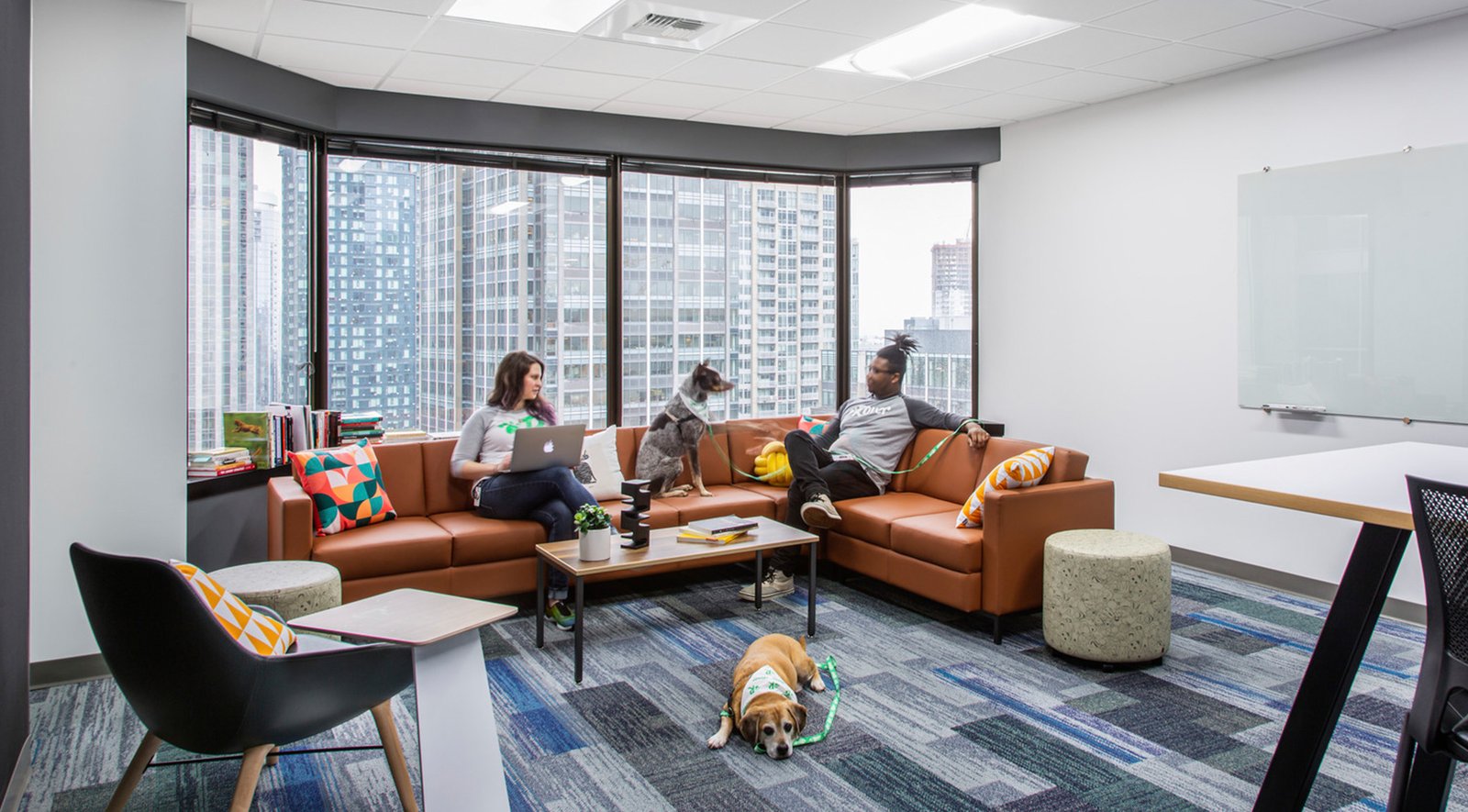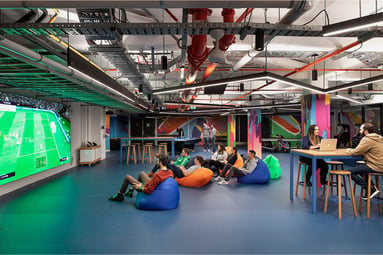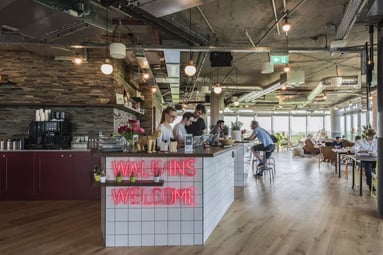Analyzing change experience in the post-pandemic work environment

In our recent webinar, strategy and workspace experts came together to discuss transitions in the change experience, the purpose of space, fostering resilience in ongoing disruption, and defining what successful change looks like.
Our expert panel
| Cassandra Charles - Director Global Workplace and Experience Centers, Genesys | Melanie Franklin - Director, Agile Change Management |
| Phil Kirschner - Senior Expert, McKinsey & Co | Sharon Quinlan - Global Real Estate and Workplace Experience, Sonos |
| Wanda Olivier - Global Facilities Operations, Kantar | David Waingarten - Creative Director, Strategy, Downstream |
| Daniel Bender – Senior Associate, Strategy, Unispace |
- 51% of hybrid employees are considering shifting to fully remote working, while 57% of fully remote workers are considering transitioning to a hybrid style
- 52% of Millennials and Gen Z are likely to consider new job opportunities that prioritize:
- Personal wellbeing and mental health
- Work-life balance
- Physical health and safety
- In April, we saw the highest return to office, with the lowest employee satisfaction since June 2020 primarily due to stress and anxiety (28%) and work-life balance (17%)
- Job satisfaction is 62% higher in executives than non-executives
- 9 out of 10 employers see improving the employee experience as a top priority
How can companies prepare for the shuffle?
Adapting the office environment
As we're in this age of great reinvention, where opportunities to stay or leave are around flexibility and work-life balance, how can companies get people through the change and motivated to come back into the office? It’s about understanding the drivers to incentivize people and promoting the office in a way that resonates with employees.
Some of these tactics include programming and space planning but to truly get people through the change, it’s about resetting the understanding.
"We're looking to reset that understanding, making the work environment just as comfortable as it would be to work in the home environment." - Cassandra Charles, Genesys
Humanizing the work experience
From the numbers, we’ve seen work-life balance as one of the largest shifts through the pandemic. Work and home personas have blended as work environments have blended, creating a focus on authenticity and normalizing humanity.
"People are more authentic about what they want and what they expect. They’re looking at their organization to behave a little bit like a person and treat them like a person. And if employees' priorities are misaligned with the organization, they’re moving on." - Phil Kirschner, McKinsey & Co.
Mitigating "decision overload"
While people have gotten used to their home work routines, coming into the office has its benefits – a change of scenery, socialization, in-person collaboration, etc. However, getting into the office isn’t as easy as it once was; there’s more planning involved, more decisions to make, and more processing that’s needed. Companies can remove the “obstacles” and create visibility for the unknowns to make it easy for people to come into the office.
"Help your people plan ahead–put structures in place that tell them whether or not coffee and lunch will be available, who is coming into the office on given days–and mitigate some of the overload with changing the routine." - Melanie Franklin, Agile Change Management
What does the future office look like and how will it operate?
The short answer – it’s still unknown. Many companies are trying to find the balance, managing shifting business priorities, client expectations, and the employee experience. Workspace is often getting put into this bucket of “too difficult to deal with right now”, and leaders are delaying decision-making to see what their peers are doing.
What does this mean for the office? If we’re asking people to make the commute to come into the office, how can companies create an experience that is better than home?
"I think one of the biggest things that we need to do as organizations is to listen to our employees, make changes, and communicate that change to people. We need to be talking to our people, listening, and seeing what their wants are, and adapting our environments to what employees need." - Sharon Quinlan, Sonos
It's about rethinking and rebalancing–understanding how your people are using the space when they’re coming in, conducting space utilization surveys, and creating focus groups. If you don't make changes with people in mind, they're going to be fundamentally unhappy and not want to be in the office, or worse at the company. Being inclusive of your people is key to business success and their happiness.
- Creating an equal work experience for virtual and in-person employees
- Establishing a dialogue with your people—connecting, listening, and being transparent
- Enabling flexibility, and helping people adjust to continuous change
- Adapting the work environment to support how your people want to work
It boils down to using a story to connect with your people. Change is always happening, but it will be up to leaders to engage and involve employees, so the experience isn’t happening to them, it’s happening through them.
"If people can’t connect to a company they’re going to leave. It’s getting to the baseline of what connects people in an organization—people need to be able to see themselves in it and agree with it." – David Waingarten, Downstream
The "new" work experience, but is it actually new?
Some experts are saying the employee experience is the new customer experience, but is that true, and is that experience actually a new concept? The truth is, work experiences have always occurred, but those experiences weren’t always a priority. Now, people look at the office experience like other space experiences—i.e. those in airports, restaurants, retail. If it’s a good experience, they go back. If it isn’t, they don’t. People are customers now, which is shifting how organizations view the workforce and workspace.
"Organizations can no longer think of the workplace or the workforce as separate. It is now people you have to attract in order to get them to your space. It's no longer a given." – Daniel Bender, Unispace
Change approaches will need act as a muscle for organization – create experiences, test, fail, and evolve. It will be different than the traditional “moving offices and adjusting to an open or closed layout.”
Change is constant, but our approach to change needs to be constant now, too
In this age of work and prioritizing the work experience, organizations need to keep orienting people and engaging them around the changes that are being made. This starts at recruitment and continues through onboarding, meaning it's critical to elevate departments like HR and IT to help create an ideal culture and employee experience.
To tie it all together:
- Your change approach should be ongoing and iterative–listen, learn, and evolve
- Employee and work experience are the keys to your success to reinforce your culture and goals
- Be inclusive of your stakeholder structure to include your workforce, your leadership, IT, and HR
Interested in learning more? Download our change experience guide or access our on-demand recording about change.


